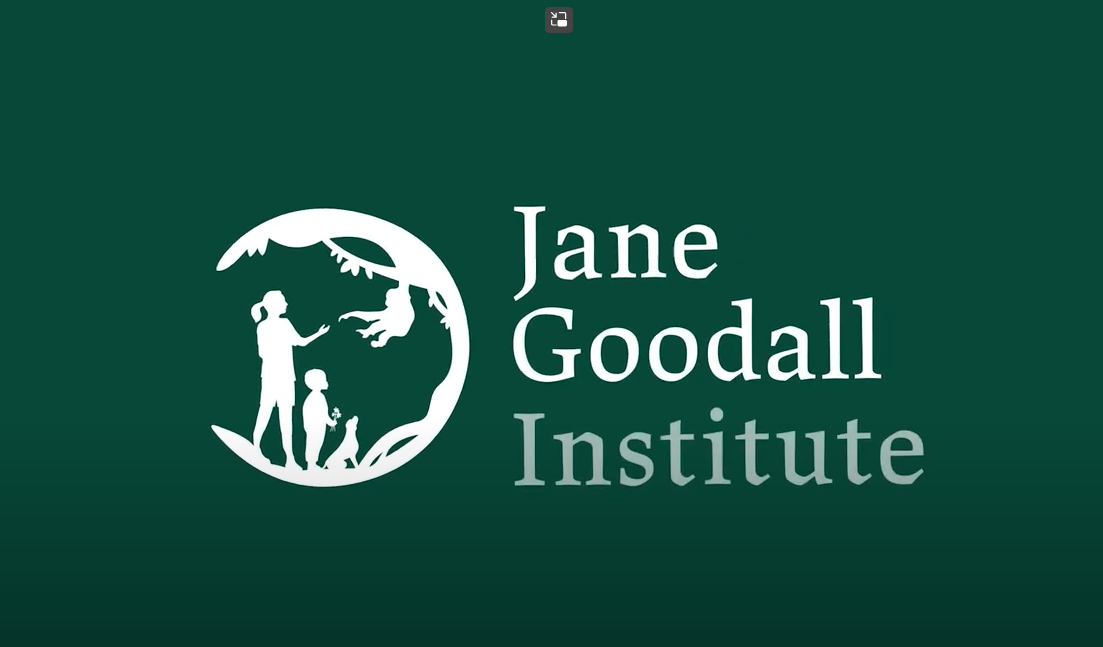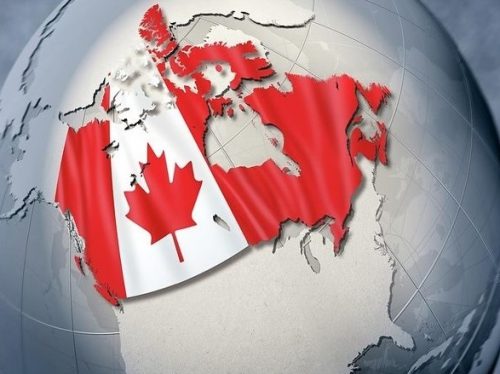At GWF 2022, Jane Goodall and Jack Dangermond Call for Collaboration for a Sustainable Future
Amsterdam, May 10: Our world is facing many challenges today. Together with the pandemic and its aftereffects, we now have a global climate emergency and geopolitical conflicts in Ukraine plus developing fallouts. In such a background, the theme of Geospatial World Forum 2022 is apt – Geography and Humanity. Going by the definition by National Geographic, Geography is the study of places and the relationships between people and their environments. In that way, Geography is a fundamental part of Humanity, and Humanity is always in the context Geography; they are inextricably interconnected
Today, as we stand at the crossroads between transitioning to a new industrial epoch and precluding a climate emergency, the ‘Where’ is getting more crucial than ever before.
The messages to the GWF attendees from two renowned conservation crusaders – Dr Jane Goodall and Jack Dangermond – were most poignant. In two separate video addresses, both the leaders appealed to the audience to act collectively and responsibly for a sustainable future. They also underlined how technologies can play a greater role in this.
Dr Lilian Pintea, Vice President of Conservation Science, Jane Goodall Institute, USA, was also part of the address.
The Jane Goodall Institute’s community-centred conservation and development program TACARE partners with local inhabitants to create sustainable livelihoods while promoting environmental protection. The program uses advanced technologies such as GIS and remote sensing to collaboratively design the future rather than imposing outside solutions.
Dr. Pintea was instrumental in introducing GIS, GPS, and satellite imagery as tools for conservation as part of the TACARE program. He is a passionate advocate for working not for but with local communities and putting the tools to monitor their environment into their hands. He works with local communities on the ground and technology partners such as Esri, Maxar, Planet and others to unlock the power of technology for conservation.
Esri is a partner in the TACARE program, but even beyond the program, environment and conservation is in the DNA of Esri, and Dangermond in particular. Jack Dangermond is widely recognized for pioneering geographic information systems (GIS) for conservation and development activities, and calls GIS “a sort of intelligent nervous system for our planet at a time when humanity desperately needs one to address the environmental and humanitarian crises at hand.”
QUOTES
Dr Jane Goodall
“Technology is helping people understand the connection between biodiversity loss, the climate crisis, and the emergence of new zoonotic diseases, such as COVID-19.”
“When I began my chimpanzee behaviour research in Gombe National Park in chimpanzee in 1960, my only tools were one pair of secondhand binoculars, pencils and a supply of paper… But at the same time, I was learning about the plight of so many African people living in and around chimp habitat. The crippling poverty, lack of good health and education programs and degradation of the land owing to human and livestock population growth,” Goodall reminiscenced.
“In 1960, it was part of the great equatorial forest belt that stretched across Africa, by the late 1980s, Gombe was a little island of forest surrounded by bare hills. There were more people living there than the land could support. Overused infertile farmland, people struggling to survive. That’s when it hit me, unless we can help these people find ways of making a living without destroying their environment, we can’t save chimps, forests or anything else. The villages were cutting down trees simply to get more land to grow more food, or make money from charcoal and timber.”
“TACARE is a perfect example of how technology can help conservation, but it will only make a lasting difference when our brains work in harmony with our hearts, where poetically, we see love and compassion. It’s our disrespect of nature and animals that provides situations such as trafficking of animals around the world, wildlife markets, factory farms, and so on that provide opportunities for pathogens to spill over from one species to another, which may give rise to a new human zoonotic disease. I do hope that all of the participants of this conference will think about these connections and the importance of protecting and respecting wildlife, and help young people realize the important role they can play in creating a better world.”
Watch the full message here: https://www.youtube.com/watch?v=H76CbaOhXhw
Jack Dangermond
“We are collectively responsible for this future. It’s creating a very unsustainable situation. If we’re going to have a positive outcome in this world, we’re going to have to get together.”
“One theme for me that cuts across all of our interests is taking a geographic approach. This is a way of thinking and problem solving that integrates our respective technologies and sciences and information and helps us understand, helps the people who we serve understand how to manage at all scales from local governments to our entire planet. This approach is integrative in nature. It’s science based and holistic, and emphasizes collaboration. Thus the whole World Geospatial Forum’s initiative of getting us together to think and include each other in our thinking and come up with solutions that really work.”
“GIS and all of these technologies together are helping us enable this geographic approach more effectively. But we need to scale this up. Technology is advancing. Some of you are involved in the advancements itself, but we’re surrounded by a technological world in a new increasingly technological society. This is going to help us scale up and address some of these big challenges in major ways.”
There are literally tens of millions of people now being fed with your kinds of information and talent so that people can make billions of maps every day. The coronavirus map was an example of this and exemplifies the effectiveness of being able to create a spatially literate society, a nervous system for us to collaboratively bring together as opposed to polarizing our societies. We need to be responsible. This forum is a way to talk about these approaches and how we can act effectively. But just the technology aspects or even the data aspects won’t be enough. It’s about you and how we can together create effective solutions, learn how to collaborate across some of the dividing lines that separate us, and above all act with urgency to create a more sustainable future.”
Watch the full message here: https://www.youtube.com/watch?v=dsfqVIDEynY
Dr. Lilian Pintea
“High resolution imagery helps us see that many of these forests and woodlands are in the process of being restored through natural regeneration as part of the interconnected village forest reserve set up by local communities as part of the village land use plans. Village forest monitors selected by their governments are equipped with smart ones and Survey 123 mobile apps and continuously monitoring their forests, sharing the observations with local decision makers through dashboards and decision support and alert systems powered by Esri ArcGIS technologies.”
“What local communities around Gombe managed to achieve here changed my view on conservation and how to leverage and use innovative technologies to build resilience in our social ecological systems and gave me hope. Few years ago, I had the chance to join you and our Tanzania colleagues and listen to local communities interpreting the satellite images. One woman pointed to an area within the image very close to her house where she used to have a farm. She had to move her farm because the village land use plan delineated that area as a village forest reserve. Now she needs to walk an extra hour a day on steep hills to reach her new farm.
I asked if it was worth it. She pointed to deforested hills and eroded streams on a 2005 satellite image and said, “You see back then we did not have trees on the hills. We had landslide, erosion. That building near the stream is a school. One day a flash flood almost destroyed the school. I had two children at the time in that school. Now look at the recent images. The trees are back. The streams are looking better. I better walk an extra hour a day, but know that our children are safe.” That’s why when representatives from the village government reach out to farmers one by one, like her, many other farmers moved their farms to benefit the community.
I was struck by her story because the power of geography and geospatial technologies was unlocked not only because communities had access to this technologies, data and training facilitated by JGI, but also because thanks to our TACARE approach, this technologies and now the science approaches became part of a decision making process owned and driven by the local people themselves. At JGI, we see geography and geospatial technology as essential conditions to help connect the needs of people, animals and our shared environment and scale our conservation impact around the world. From using Esri’s ArcGIS Conservation solutions to daily manage the largest chimpanzee sanctuary in Africa, to protected area management, to planting trees and restoring forests in Uganda, in all these applications, our TACARE community led approach is key, creating spaces as part of locally owned decision making processes where technology providers, scientists, local communities, government decision makers, and others could have a dialogue, develop a common understanding and trust, and convert this amazing data into shared knowledge, wisdom, and better decisions for people, animals, and our shared environment.”
About Geospatial World Forum
Geospatial World Forum is one of the most prestigious global geospatial conferences and annual gatherings of geospatial professionals across the world. This year’s edition GWF 2022 runs from May 10 to May 12 at the Taets Art and Event Park, Zaanstad, Amsterdam. The three-day conference is produced by Geospatial World and co-hosted by Dutch Kadaster.
Visit website for more information: https://geospatialworldforum.org/index.html
Media Contacts
Anusuya Datta
Vice President, Marketing and Communications
anusuya@geospatialworld.net Meenal Dhande
Associate Editor & Product Manager – Europe
meenal@geospatialworld.net






